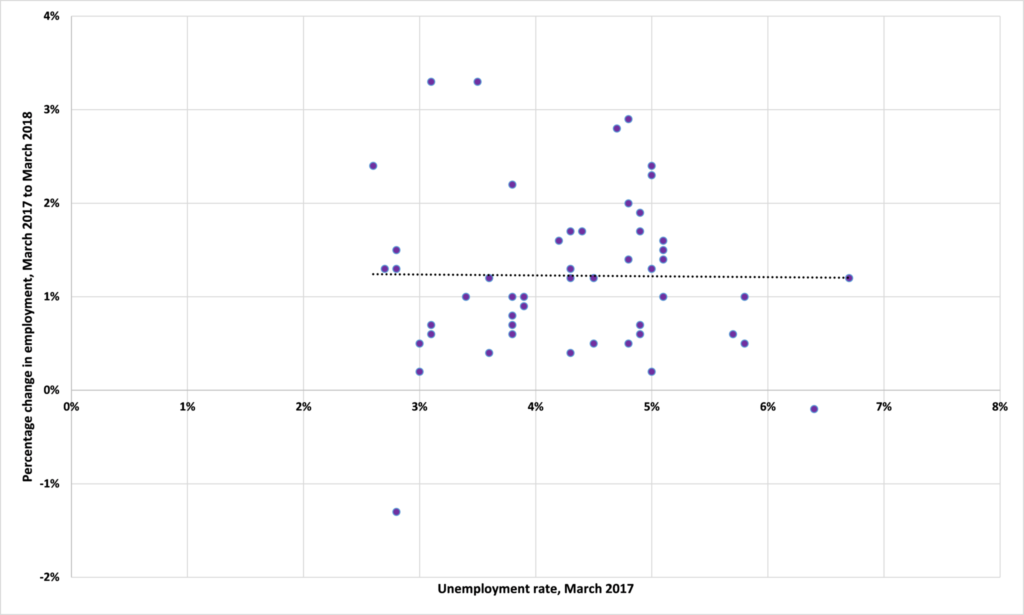Minnesota has slow job growth and its low unemployment rate is not to blame
The Bureau of Labor Statistics has just released data on the change in employment for the states in the year ending March 2018.
Minnesota ranked just 37th out of the 50 states with job growth of 0.7% over this period. The BLS deems this not a statistically significant change.
We hear a lot about the state’s labor market. Jobs are plentiful, workers are scarce, wages are beginning to rise after years of stagnation.
So, maybe the slow growth in Minnesota’s labor force over the last year is because employment was already high in the first place. If employment was high in March 2017, could we really expect it to grow all that quickly in the following twelve months?
It is true that in March 2017, Minnesota’s unemployment rate of 3.8% was some way below the average of the state’s rates of 4.3%.
But it is not true that states, like Minnesota, which had low unemployment rates in March 2017 had low job growth in the following twelve months. Eight states (Idaho, Utah, Colorado, South Dakota, New Hampshire, Hawaii, Massachusetts, and Wisconsin) had unemployment rates lower than Minnesota in March 2017 and job growth that was higher in the subsequent twelve months. The remaining seven states which had unemployment rates below Minnesota’s in March 2017 had lower rates of job growth in the following twelve months. Furthermore, in the cases of Idaho, Utah, Colorado, Massachusetts, and Wisconsin, the increase was rated as statistically significant by the BLS.
Figure 1

Source: Bureau of Labor Statistics
In other words, a state’s job creation in the twelve months leading up to March 2018 was not a function of its unemployment rate in March 2017. As Figure 1 shows, higher rates of employment in March 2017 are not correlated with higher rates of employment growth subsequently. It cannot be said, therefore, that Minnesota’s poor recent record on job growth is down to already low unemployment rates. Idaho, Utah, Colorado, Massachusetts, and Wisconsin had lower unemployment rates and still generated better job growth.
Minnesota just has slow job growth. Its low unemployment rate is not to blame.
John Phelan is an economist at the Center of the American Experiment.